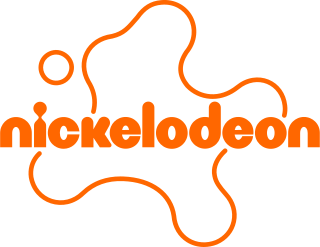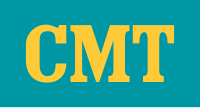
CHUM Limited was a Canadian media company based in Toronto, Ontario in operation from 1945 to 2007. The company was founded in 1945 as York Broadcasters Limited when it launched CHUM-AM 1050 but was acquired by salesman Allan Waters in 1954. CHUM had expanded to and owned 33 radio stations across Canada under its CHUM Radio Network division and also owned other radio stations.

Much is a Canadian English language discretionary specialty channel owned by BCE Inc. through its Bell Media subsidiary that airs programming aimed at teenagers and young adults. Prior to 2013, the channel was officially known as MuchMusic, though "Much" has been the branding most commonly seen on-air since 1997.

Cartoon Network is a Canadian English-language discretionary specialty channel owned by Corus Entertainment. The channel primarily broadcasts animated series aimed at children and teenagers.

Max Trax was a Canadian pay television audio service that broadcast continuous streaming music on multiple channel feeds. The service was owned by Stingray Digital.

Corus Entertainment Inc. is a Canadian mass media company. The company was founded in 1987 as Shaw Radio, Ltd. as a subsidiary of Shaw Communications and was spun-off from Shaw in 1999. It has prominent holdings in the radio, publishing, and television industries. Corus is headquartered at Corus Quay in Toronto, Ontario.

CMT is an American pay TV network. Launched on March 5, 1983, as Country Music Television, CMT was the first nationally available channel devoted to country music and country music videos, with its programming also including concerts, specials, and biographies of country music stars. Over time, the network's programming expanded to incorporate original lifestyle/reality programming, and sitcoms aimed at audiences of all walks of life.

Family Channel is a Canadian English-language specialty channel owned by WildBrain. The network primarily airs children's television series, teen dramas, as well as other programming targeting a family audience. Despite having its own headquarters in the Brookfield Place office in Financial District, the channel is transmitted from Corus Quay.

Oprah Winfrey Network, more commonly shortened to OWN, is a Canadian English language discretionary service channel owned by Corus Entertainment. The channel was launched in September 1, 1999 as Canadian Learning Television (CLT) by Learning and Skills Television of Alberta, Ltd., then held by CHUM Limited. The network's owner, Corus Entertainment, licenses the OWN brand and its American programming from Warner Bros. Discovery.

Movie Central was a Canadian English language Category A premium cable and satellite television channel that was owned by Corus Entertainment. Movie Central was designated to operate west of the Ontario-Manitoba border, including the territories. Although the channel's name implies that it focuses solely on theatrically released motion pictures, Movie Central's programming included original and foreign television series, made-for-cable movies and documentaries.

Stingray Juicebox is a Canadian discretionary music specialty channel owned by Stingray Group. It is a commercial-free channel that broadcasts music and music videos aimed towards children and teens.

Leonardo World was a Canadian category 2 Italian language digital cable television channel wholly owned by Telelatino Network Inc. The channel broadcast programming related to Italian arts and culture including cuisine, fashion, travel, and more. It was a Canadian version of the Italian channel, Leonardo World.

IFC was a Canadian English language specialty channel. The channel was owned by Corus Entertainment. The channel broadcast independent films, documentaries, and television series. Its name was licensed from the American company AMC Networks, the owner of IFC. The channel ceased operations on September 30, 2019.
Stingray Music is a Canada-based international multi-platform audio service that broadcasts continuous streaming music and other forms of audio on multiple channel feeds. The service is owned by Stingray Digital.
Canada is served by various multichannel television services, including cable television systems, two direct-broadcast satellite providers, and various other wireline IPTV and wireless MMDS video providers.
Video Italia was a Canadian category 2 Italian language digital cable television channel owned by Telelatino Network Inc. (80%) and Gruppo Radio Italia (20%). The channel broadcast primarily music programming such as concerts and music videos. It was a Canadian version of the Italian channel, Video Italia.
Stingray Group Inc. is a Canadian music, media and technology company based in Montreal, Quebec, with offices in Toronto, Ontario, as well as in the United States, Mexico, the United Kingdom, the Netherlands, Germany and Australia.

Nickelodeon is a Canadian English language discretionary specialty channel based on the American cable network of the same name owned by Corus Entertainment under a brand licensing agreement with Paramount Media Networks, a division of Paramount Global.

ABC Spark is a Canadian English-language discretionary specialty channel owned by Corus Entertainment. The channel was launched on March 26, 2012, replacing the declining channel Dusk.

Boomerang is a Canadian English language discretionary specialty channel owned by Corus Entertainment. It is a licensed version of the U.S. channel of the same name, which primarily broadcasts animated programming from the Warner Bros. Animation library, including Warner Bros. Cartoons and Hanna-Barbera productions among others, as well as contemporary reboots of classic franchises. The channel also occasionally broadcasts reruns of Cartoon Network original series.

Disney Channel is a Canadian English language discretionary specialty channel owned by Corus Entertainment under license from The Walt Disney Company, which began broadcasting on September 1, 2015. It is a localized version of the U.S. basic cable network of the same name, broadcasting live-action and animated programming aimed at children between the ages of 9 and 16.





















